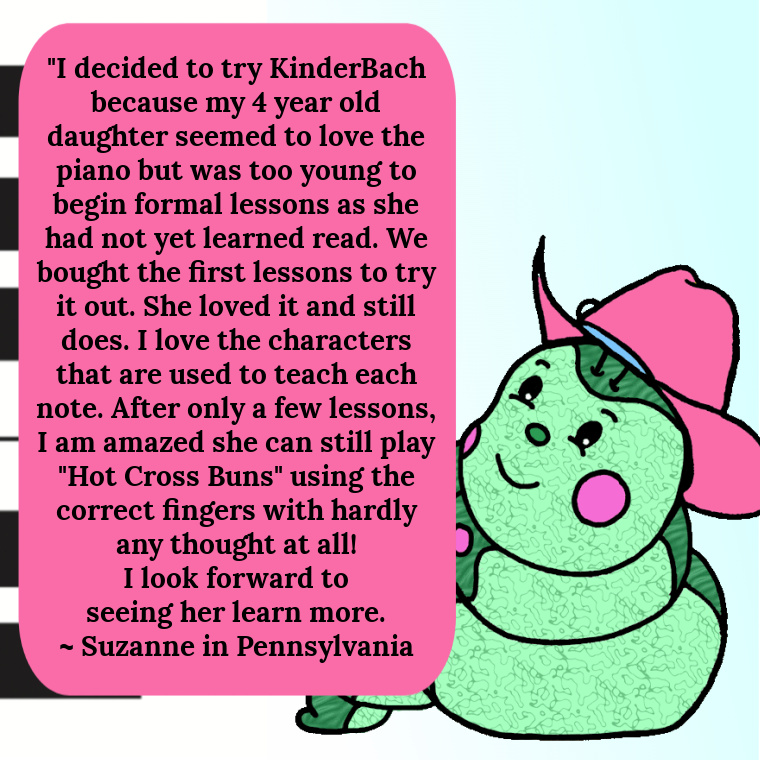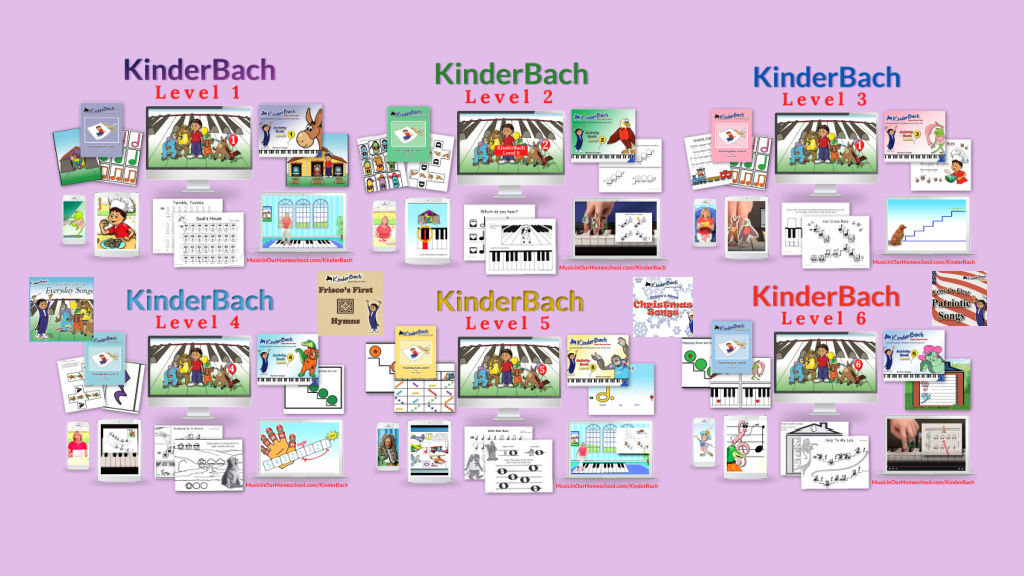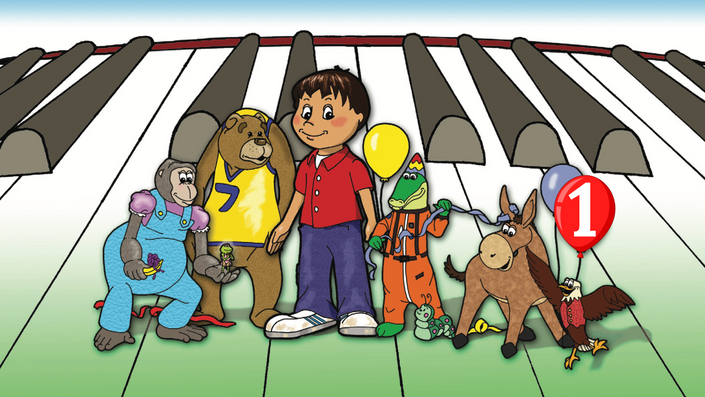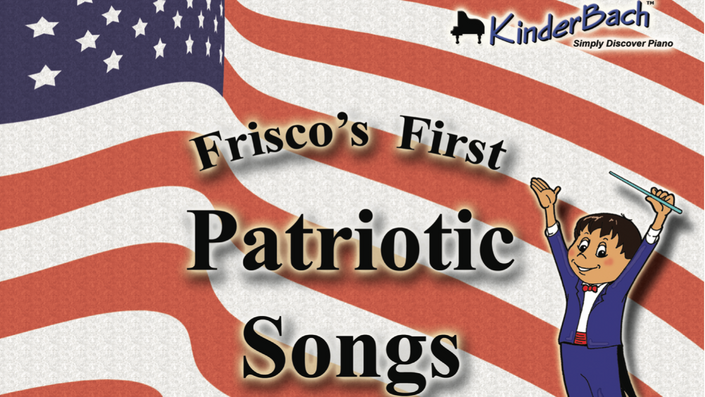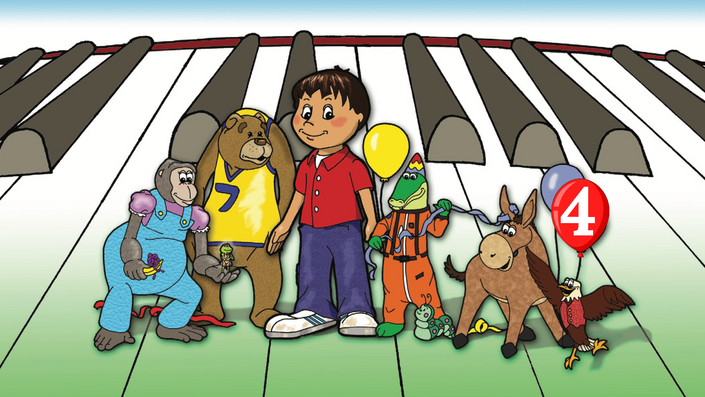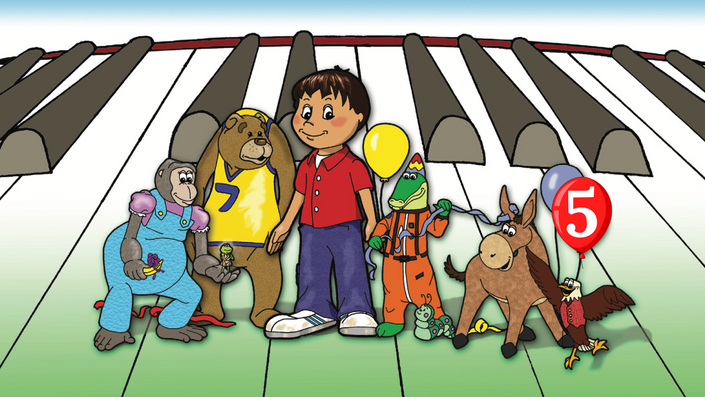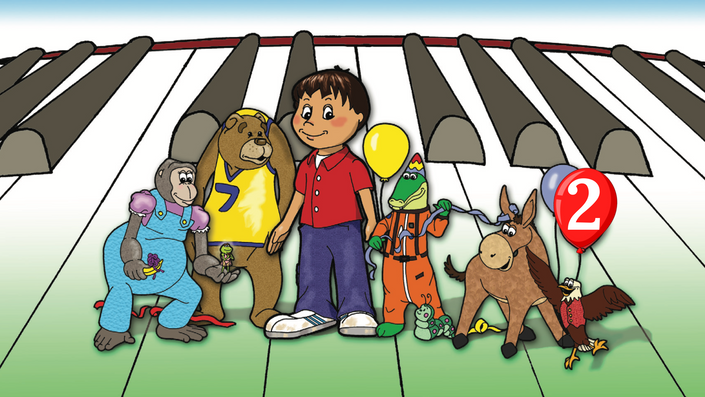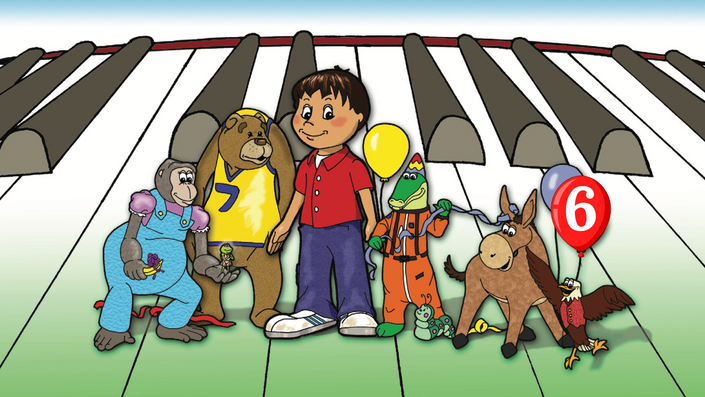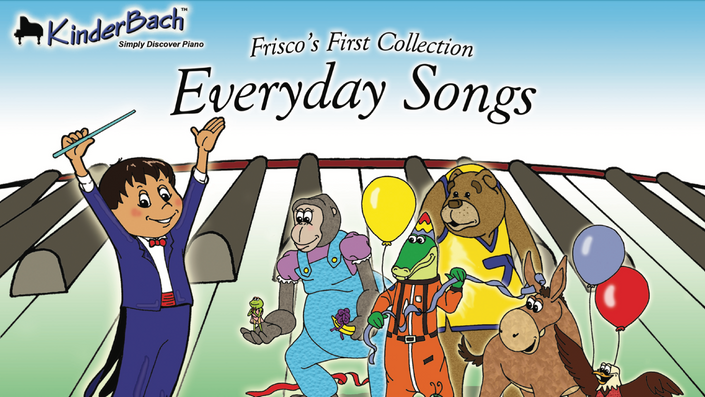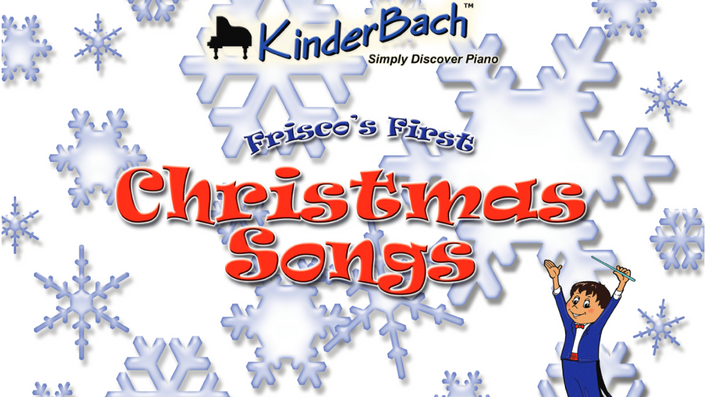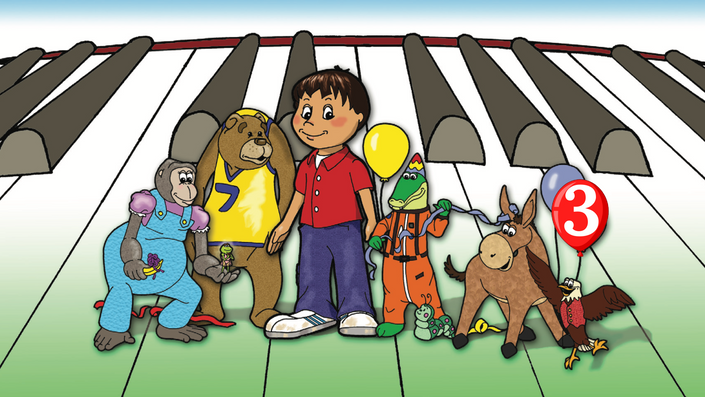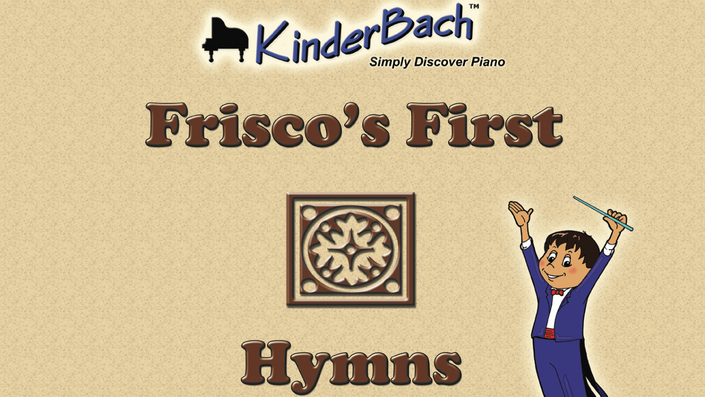Hey Preschool Moms!
Do you desire to give your kids a musical environment to learn piano and theory at an early age without struggle -- and in only minutes a day?
Then, KinderBach is here for you!
How will KinderBach teach your kids piano (and more?)
Watch this!
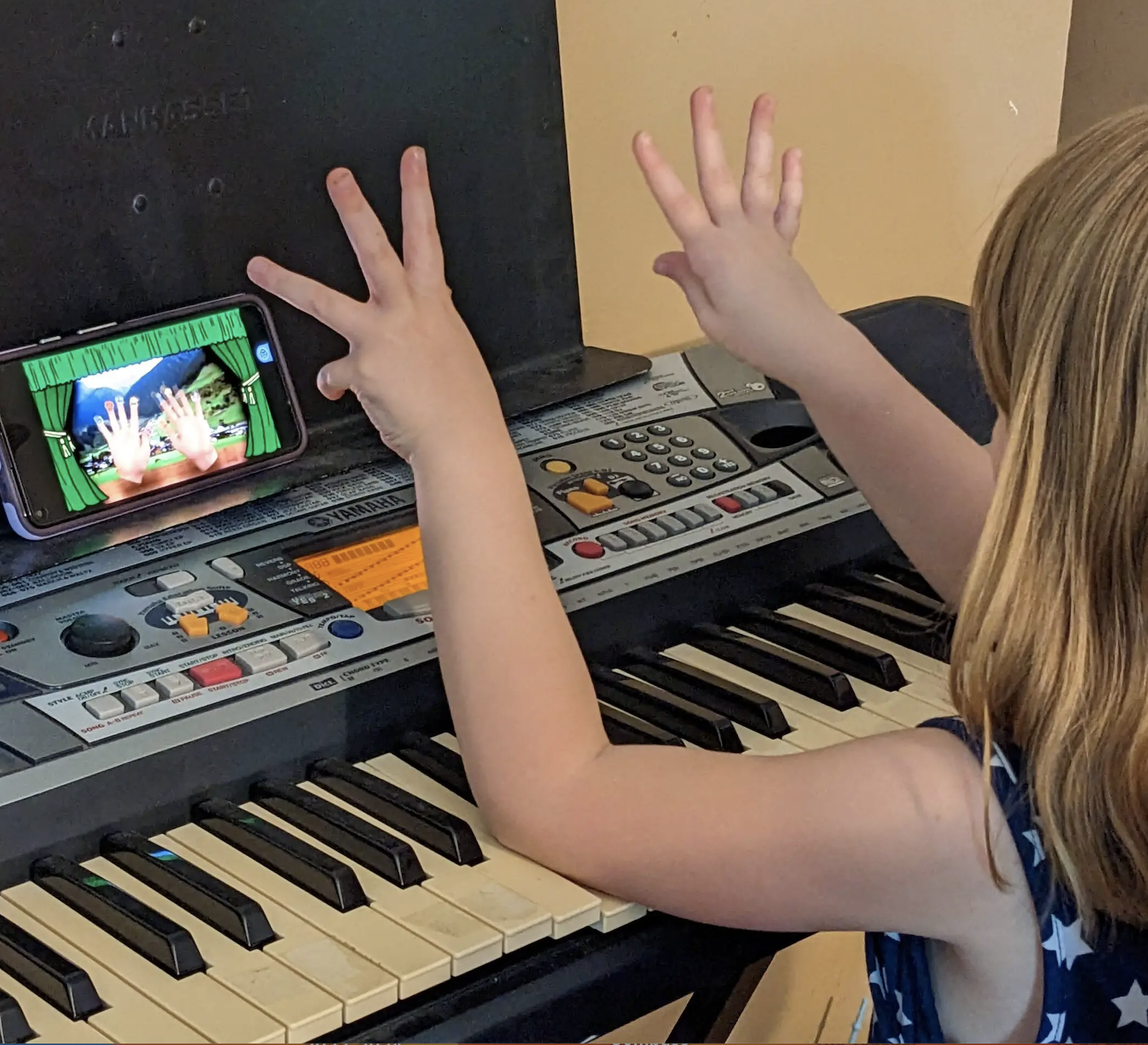
“Can we do that fun music thing again?
My daughter absolutely loves KinderBach! The videos make it so fun and easy for her to learn piano at home, and I love that she is also learning important music skills that will help her be able to read music as well. This program is a perfect positive first experience for kids who are just getting started playing the piano. I would definitely recommend this program for parents who want their kids to learn piano at home!
My daughter just came in and said “Can we do that fun music thing again?”🙂
~Sarah Miller of Homeschooling 4 Him
Bundle Contents
Levels 1-6 plus 4 Songbooks
KinderBach: online piano and music theory program for children ages 2 to 7 in six levels
I know you're busy! I'm a mom of 8, and I get it.
But, as a music teacher, I know how important it is to begin musical training at the earliest of ages!
The sooner kids learn about pitch and rhythm, the better musically they will be as they grow, whether they choose to become professional musicians, just sing for fun among friends, or play the guitar for relaxation on their own at home.
KinderBach makes it easy & fun!
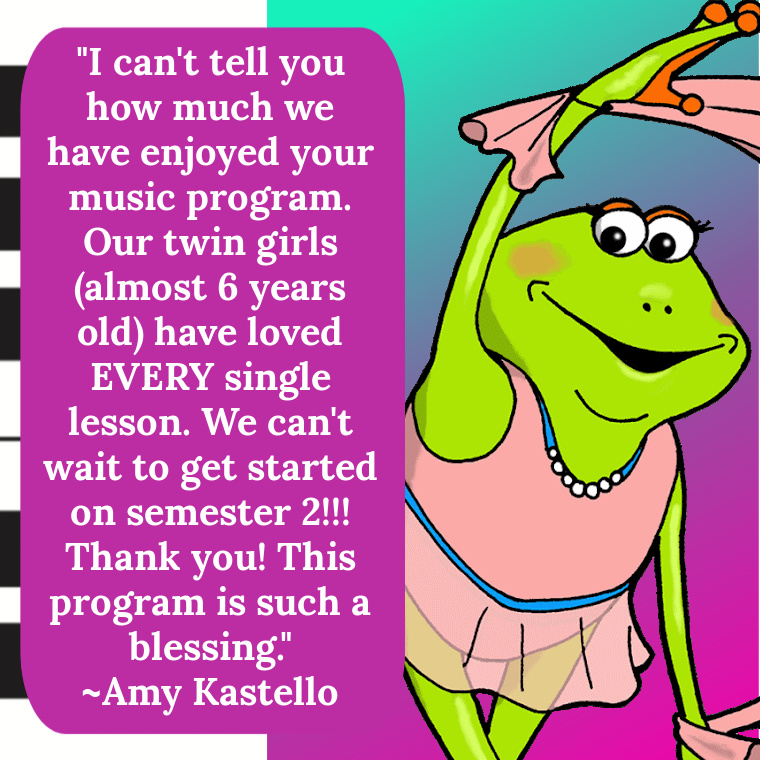
What do Preschoolers Learn with the KinderBach Beginning Piano Course?
Level 1
- Familiarity with the black and white keyboard landscape.
- Aural discrimination of high and low sounds as well as loud and quiet.
- Music term “Piano” means quiet or soft.
- Quarter note, half note and the beat value of these symbols in common time.
- Keeping the beat with rhythm instruments and on the piano.
- Distinguishing left and right hands.
- Finger numbers for playing keyboard.
- Introduction to songs that will be used for Kodaly Solfege.
- Introduction to pre-Staff note reading by patterns.
Level 2
- Review all concepts from Level 1
- Characters for C, D, & E and their location on the keyboard.
- Emphasize relationship of the character to their letter name.
- Play simple songs with these notes.
- Aural discrimination of high, middle, and low sounds.
- Music terms “Piano” and “Forte”.
- Identify simple rhythms.
- Introduction of two Solfege terms.
- Play pre-Staff note patterns on the keyboard.
Level 3
- Review all previous concepts.
- Add characters for F & G and their location on the keyboard.
- Emphasize relationship of the character to their letter name.
- Play simple songs with these notes.
- Aural discrimination for music direction.
- Eighth notes and their beat value in common time.
- Addition to Solfege terms.
- Proper hand and finger position at the piano.
- Addition to pre-Staff note patterns and playing them on the keyboard.
- Identify pre-Staff note patterns by ear.
- Clap back simple rhythms.
Level 4
- Review all concepts
- Add characters for A & B and their location on the keyboard.
- Emphasize relationship of character to their letter name.
- Play simple songs with these and other notes.
- Whole notes and the quarter rest with beat value in common time.
- Addition to dynamic terminology
- Proper hand position and fingering for the music scale.
- Addition to pre-staff note patterns, playing these patterns on the keyboard and identifying them by ear.
- Introduction of staff reading using patterns.
- Identify line and space notes.
Level 5
- Review all concepts.
- Introduce the Treble & Bass clefs together with the Grand Staff.
- Emphasize character to letter and letter to placement on keyboard.
- Introduce the dotted quarter note and its’ beat value in common time.
- Addition to dynamic music terminology.
- Fingering for the C major scale.
- Introduce time signature and measures divided by bar lines.
- Addition to the more note patterns, playing them on the keyboard and identifying them by ear.
- Learn to read these patterns on the staff.
- Introduce simple methods of composition.
- Read music on staff by pattern.
Level 6
- Review concepts from previous Levels.
- Introduce the notes ‘C’ and ‘D’ on staff.
- Emphasize all characters to notes on keyboard as well as C & D on staff.
- Introduce the half and whole rest with their beat value in common time.
- Addition to dynamic music terminology.
- Finger exercises, playing the C major scale with correct fingering.
- Play familiar songs with all notes both pre-staff and staff reading.
- Addition of note patterns both on and off the staff.
- Progress with composition methods.
-
Read music on staff by pattern and by recognition of ‘C’ and ‘D’ locations.
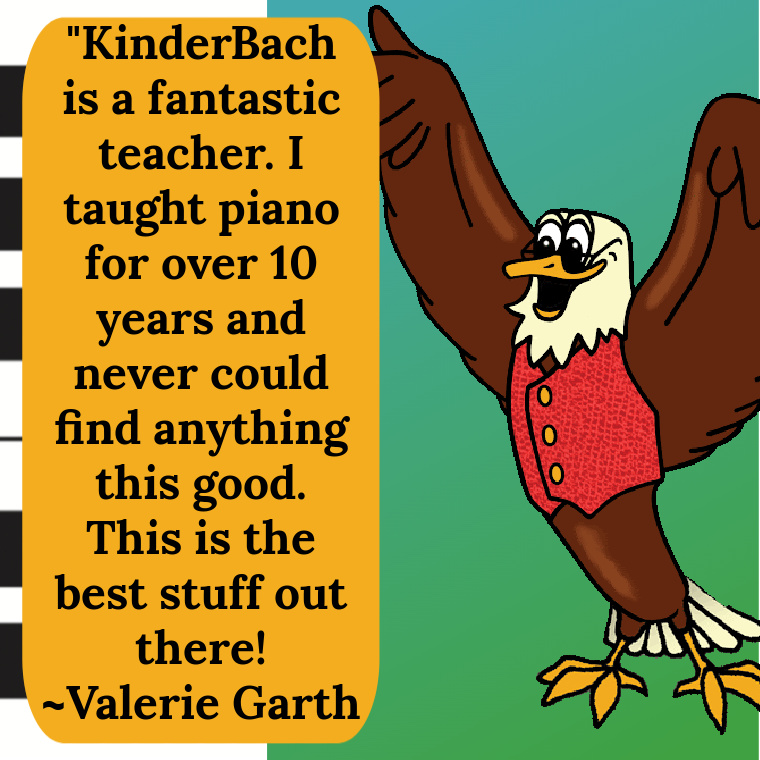
You don’t need any formal music education as a parent!
The KinderBach Parent Guide gives you a heads-up on basic music theory.
The Six Areas of Musical Development:
1. Ear or Listening Skills – Beginning with the range of sound from high to low and loud to quiet, recognition and duplication of melodies and rhythm, essentially for playing by ear.
2. Sight or Note Reading – Recognizing the letter names of the individual keys on the piano, reading notes on staff, patterns and direction of music, and understanding simplified chord symbols.
3. Rhythm – Understanding the beat value and rhythm of notes and their placement within different time signatures.
4. Hand Position or Technique (for playing the piano) – Understanding the piano finger numbering system, differentiating between left and right hands, and strengthening fine motor skills. Proper hand position at the piano is introduced and modeled in much the same way as penmanship in school.
5. Singing – Vocalizing music adds to the pleasure of music education. Singing is an essential building block for playing by ear.
6. Composition – Guidance in using the tools and skills learned to create music. The composition area of the KinderBach curriculum teaches the student not to simply copy or recite music, but to create it– making music a true outlet for artistic expression.
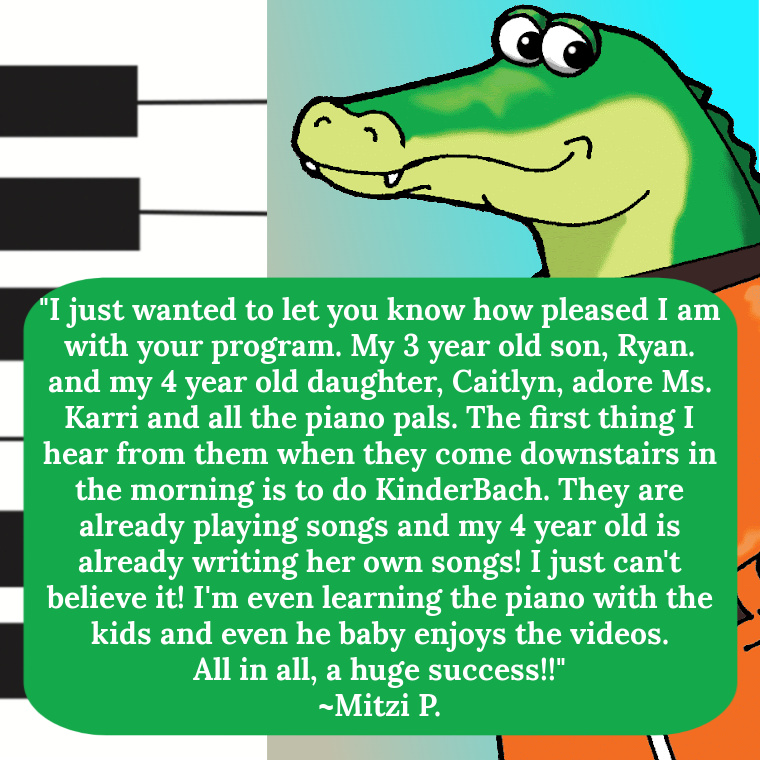
Let the Piano Pals teach your preschoolers piano!
FREQUENTLY ASKED QUESTIONS....
Is KinderBach Right For Me?
Click here for a free preview of Lesson 1.
WHAT AGES IS KINDERBACH BEST FOR?
- ages 2-7
- specifically written for preschool ages of 3-5
WHAT WILL MY KIDS LEARN?
You and your kids will learn:
- to distinguish pitches
- to play with a steady beat
- to sing
- the notes of the piano
- to play some simple songs
- beginning composition
- more beginning music theory techniques
WHAT DOES KINDERBACH NOT INCLUDE?
Everything is pre-recorded. There are no live lessons or private instruction.
CAN I GET A PHYSICAL COPY OR REAL BOOKS?
KinderBach is now only available in digital course format. You may print any included lesson plans, printables, and coloring pages and have them bound or keep them in a 3-ring binder if you wish.
IS KINDERBACH AVAILABLE IN AN APP?
Yes, KinderBach is hosted with Teachable, which has an iOS app. Teachable is developing a new app as well, so eventually, it will be available for Android as well.
HOW SOON AFTER PURCHASING WILL I RECEIVE MY PRODUCT?
Access to KinderBach will be delivered digitally, via the email address you provide at checkout. It should arrive within 5-10 minutes of your purchase and you can begin using it immediately!
HOW DO I KNOW WHETHER KINDERBACH IS RIGHT FOR ME?
If you are a homeschooling mom of kids in preschool who desires to include a music education for her kids, then KinderBach is for you! Try out the free lesson here.
WHAT'S THE INVESTMENT?
Each level of KinderBach is $37 and is a one-time purchase with lifetime access. It's also available as a bundle to purchase all 6 levels at once at a discount.
HOW DO I CONTACT GENA WITH A COMMENT OR QUESTION?
Head here to contact me: https://musicinourhomeschool.com/contact-me/
WHAT IS YOUR RETURN POLICY OR WHAT IF I WANT TO CANCEL?
There is a 30-day money-back guarantee. Contact Gena at the link above.
